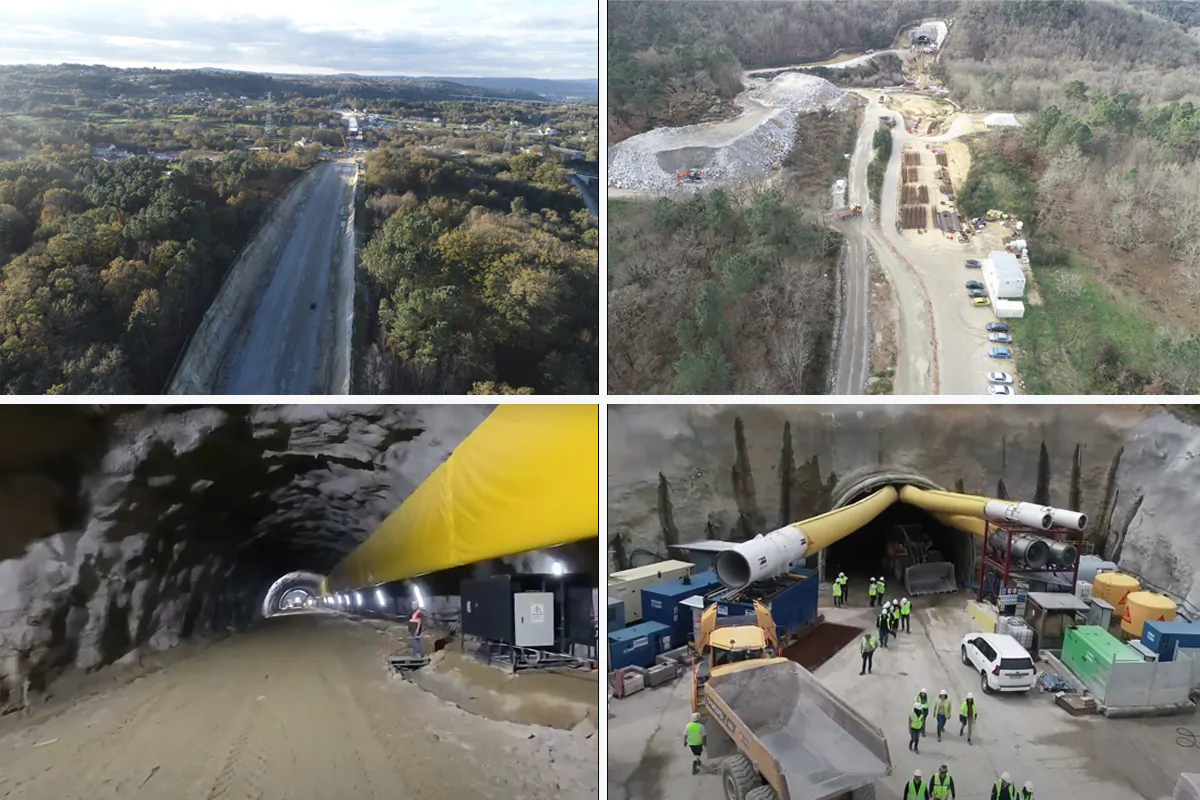
17/03/2025
The construction of the Taboadela–Rante Tunnel section of the High-Speed Rail line for Adif Alta Velocidad has become a flagship example of sustainable infrastructure for Sando Construcción. The project, carried out by a joint venture led by Sando, has stood out for its strong focus on environmental management and Sustainability practices.
It forms part of the wider works to integrate and enhance the urban Railway network in Ourense. Innovative Tunnel Construction. The centrepiece of the project is the Rante Tunnel—a dual-track single-tube tunnel with a free cross-section of 85 m² and a length of 3,410 metres, built using the New Austrian Tunnelling Method (NATM).
The site team adopted a resource-efficient approach aligned with circular economy principles, reducing raw material consumption and maximising Waste reuse. The joint venture was officially recognised as a Non-Hazardous Construction and Demolition Waste Recovery Company, with over 50% of excavated materials recovered for reuse.
Excavated stone was repurposed to produce concrete for the project and to restore disused open-pit quarries, contributing to environmental recovery.
These actions significantly reduced the occupation of natural habitats, minimised resource consumption and carbon footprint, and eliminated the need to transport half the excavated material to landfill.
The project successfully met all six environmental goals of the EU Taxonomy’s “Do No Significant Harm” (DNSH) principles, achieving an impressive 98% recovery rate of construction and demolition waste.
Water management was another key achievement of the project. The type of explosive used in tunnelling was changed from ANFO (ammonium nitrate and fuel oil) to a gelatinous alternative (Goma-2), reducing ammonium levels in the water.
Three water treatment systems were installed at the tunnel portals and operated for 22 months to treat industrial wastewater from drilling activities. These systems significantly reduced suspended solids, ammonium, and other pollutants, allowing part of the treated water to be reused in drilling, dust suppression, and cleaning, thereby reducing water extraction needs.
To safeguard sensitive ecosystems and wildlife, construction activities were restricted between March and July in compliance with environmental requirements, particularly to protect watercourses, riparian vegetation, and forested areas.
A biologist specialising in ecosystem restoration was contracted to coordinate conservation efforts in collaboration with the Galician Regional Government’s Natural Heritage Department (Patrimonio Natural de la Xunta de Galicia).
These actions prevented the occupation of over 86,000 m² of land earmarked for landfill, protecting habitats and minimising impact on native species such as the European pond turtle (Emys orbicularis).
As part of its environmental management plan, Sando also trained subcontractors, raising awareness across all production levels about the importance of environmental protection.
The Taboadela–Rante Tunnel project was honoured in the first edition of the Sando Awards, winning in the category for “Greatest Contribution to Sustainability and Quality.” The award recognises the dedication and commitment of the entire project team.
In alignment with the Sustainable Development Goals and the 2030 Agenda, Sando Construcción has contributed to SDG 9 (building resilient infrastructure, fostering sustainable industrialisation, and promoting innovation), SDG 15 (life on land), and SDGs 11, 12, and 13 through responsible resource use, circular economy integration, and carbon footprint reduction.